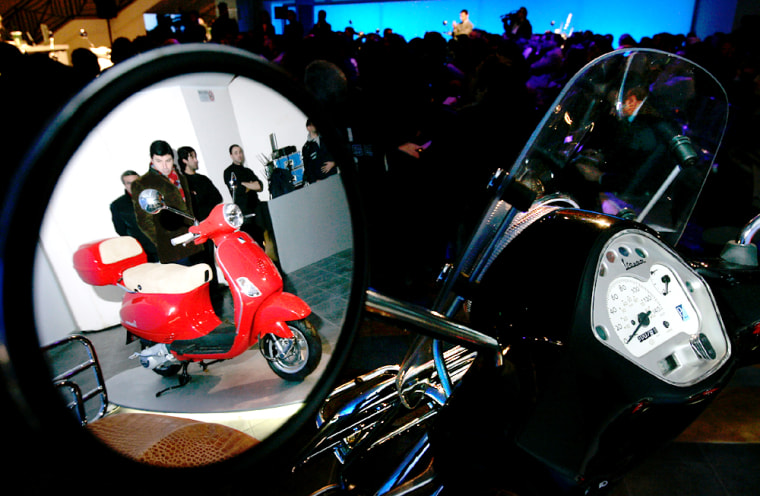Antonio Passaro, a 30-year-old clerk at a Turin [Italy] mechanical-engineering company, is counting the days until he can pick up the $4,116 Vespa LX he ordered. It's a sleek black scooter with a brown suede saddle. Other scooters "all look alike," he says. "I love the old Vespa style, and I wanted it with brand-new technology."
That's the kind of brand devotion Italian raider Roberto Colaninno was banking on when he sealed his $133 million purchase of Vespa's holding company, Piaggio, in October, 2003. The bargain price reflected the sagging fortunes of the iconic marque, immortalized in the 1953 film Roman Holiday, starring Gregory Peck and Audrey Hepburn.
Bargain hunter Colaninno has since picked up some more banged-up two-wheelers. In December he used Piaggio to acquire Aprilia and Moto Guzzi in a $200 million transaction. Colaninno is betting he can restore luster to his collection of Italian motorcycle and scooter makers, which at one time dazzled with their design. "We have totally new, top-quality management, and growth will allow us to compete with the Japanese," says Colaninno, who after working his way up to the CEO slot at Olivetti dazzled Italy with his $41 billion takeover of Telecom Italia in 1999. He was ousted three years later when disillusioned shareholders backed a takeover by tire- and cable- maker Pirelli & Co.
Colaninno's labors at Piaggio are starting to pay off. The new LX, out this month, builds on the success of one of the company's best-selling models, the ET, launched in 1996. To improve on an old favorite, the designers team drew a more angular body; enlarged the wheel by 2.54 cm to improve stability; and gave it an elegant five-spoke design in aluminum alloy. The tail end is blunter than in the ET, emphasizing the solidity of the all-steel scooter. The round headlamps and rear-view mirrors in chrome-plated steel are vintage Vespa. "The new Vespa has gotten a face-lift," says Shay Moftakhar, a motorcycle reporter for Dealernews. "It's very visual. If they'd introduced this model in 1999 they would have doubled their sales and avoided a lot of pain."
Death spiral
The LX Marks the start of a product offensive at Piaggio, with 15 new models due out this year. Those wheels should help speed a turnaround. On Mar. 4, Piaggio reported a preliminary 2004 net profit of $5.46 million, on sales of $1.44 billion. That's compared with a loss of $185 million the year before. And Colaninno boasts that his stable of marques, which includes former star brand Moto Guzzi, enjoys a 24% market share in Europe.
Both Piaggio and Aprilia were trapped in a death spiral of falling sales, dwindling cash flow, and heavy debt when the Italian raider stepped in. Piaggio had wasted money trying to peddle expensive Italian-designed mopeds in China, while Aprilia, which was essentially a scooter company, had branched out into large motorcycles that could win Grand Prix races but garnered little return from sales.
After inking the deal for Piaggio, Colaninno persuaded creditor banks to swap $160 million in debt for equity, introduced competition among suppliers, and began looking to China for cheaper parts. In April, 2004, Piaggio signed a joint-venture agreement with Chinese group Zongshen for the production and marketing of Italian-designed engines, vehicles, and parts for the Asian market.
Plans for an initial public offering of Piaggio's shares in 2005 were sidetracked by the Aprilia acquisition. Already, Colaninno has hired the former president of Alfa Romeo (FIA), Daniele Bandiera, to redesign Moto Guzzi from headlight to muffler. With luck, a new golden age for Italian two-wheelers could follow.
